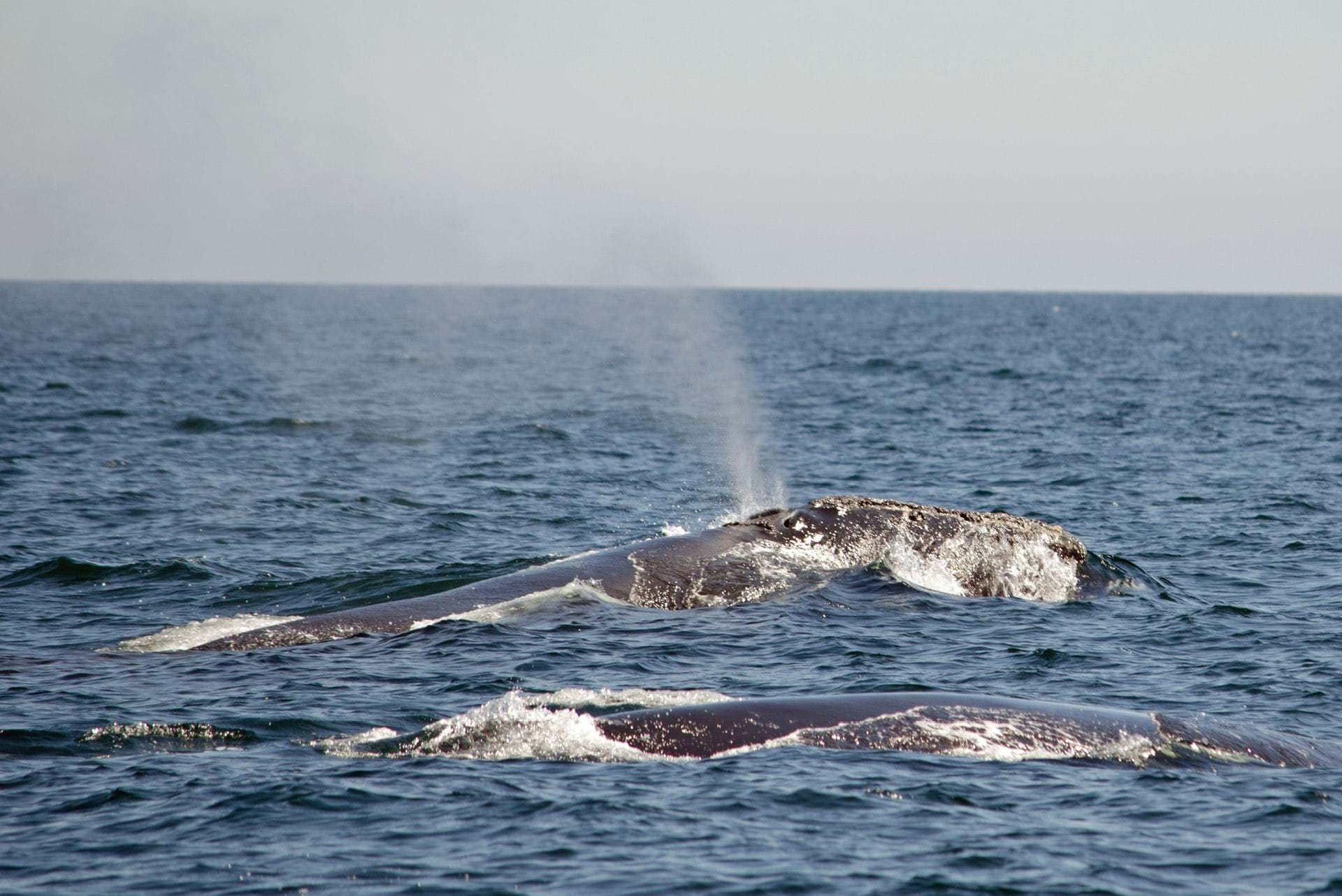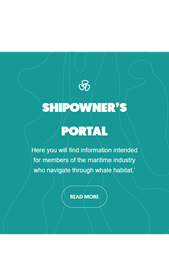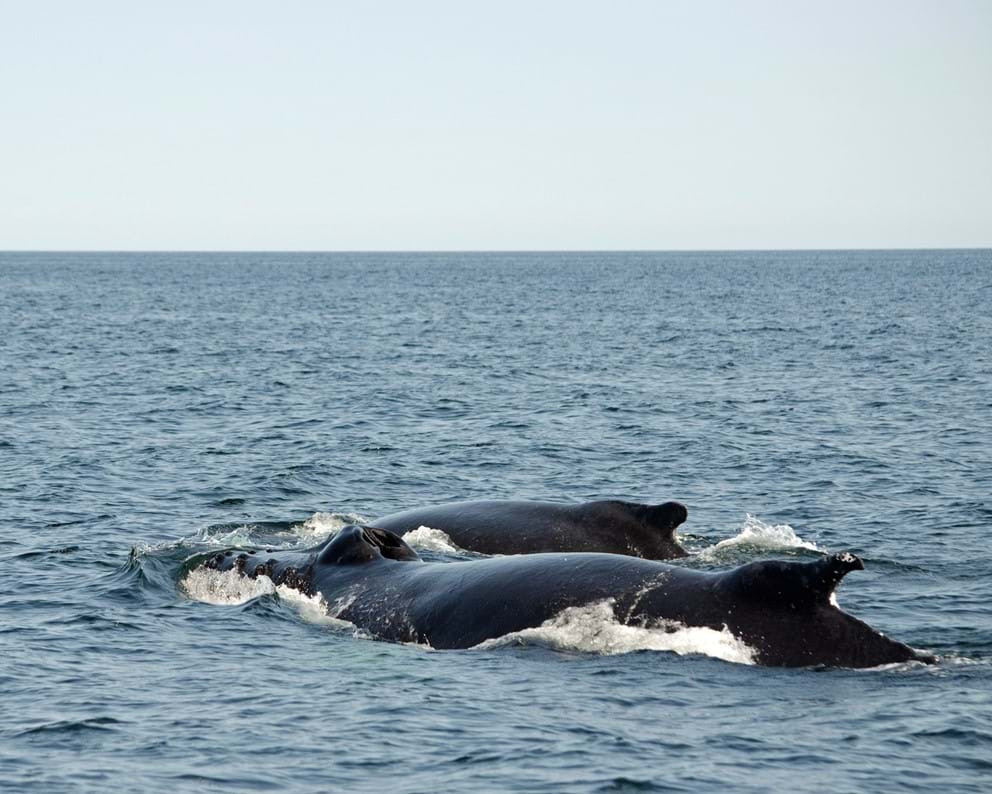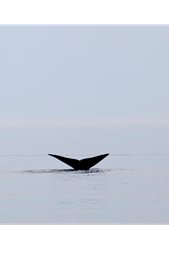
New whale online resource
ConservationOnline platform simplifies harmonious co-existence with Eastern Canada’s marine mammals
Plying Eastern Canada’s waters in harmony with the region’s marine mammals has been made simpler with a suite of online tools developed by the Marine Mammal Observation Network (MMON) in collaboration with several key partners, including Green Marine.
Navigating Whale Habitat offers specific portals for ship owners, commercial fishers, and recreational boaters (including kayakers) to obtain all the information they need to safely navigate whale habitat, identify species, relate sightings, and report marine mammals in difficulty.
Specific portals
“The distinct portals give each of these groups of maritime users immediate and straightforward access to all of the regulations and voluntary measures currently in effect to protect marine mammals,” says Sonia Giroux, MMON’s associate director. “It greatly simplifies matters by streamlining all of the different government documentation and other pertinent information to one place to quickly find out or double check what currently applies specifically to your group.”

Online training for mariners to identify whales and other marine mammals is also now available through the ship owner’s portal.
“We started out half-day training for mariners on site, but that was sometimes challenging given different locations, work schedules and then COVID-19 safety precautions,” Giroux shares. “Now it’s a lot more convenient to complete the training online.”
Fisher solutions
The fisher’s portal additionally has information on innovative solutions to carry out fishing in with less potential harm to whales and other marine mammals. The boater’s online training provides the regulations for safe boating and paddling, as well as how to identify the most frequently encountered species.
MMON developed the platform step by step in partnership with key stakeholders which in the case of mariners included Transport Canada, Fisheries and Oceans Canada, the Shipping Federation of Canada (which is a founding Green Marine association member), WWF-Canada and the St. Lawrence Global Observatory (both of which are Green Marine supporters), and Canada Steamship Lines, Groupe Desgagnés and Fednav (all of which are Green Marine founding participants), as well as Green Marine.

Charlotte Horvath, ROMM
Enhanced ID training
The whale identification training for mariners is more detailed as this group continues to voluntarily contribute to data collection. “It’s so important to us at MMON to work in consultation and obtain the opinions of the people that we hope will consistently use our tools and resources,” Giroux emphasizes.
MMON originally collaborated with Green Marine to develop a comprehensive whale data collection and training program tailored to the reality of ship owners and operators.
Groupe Desgagnés, having an officer who had been a member observer for MMON since 1998, initiated the mariners’ voluntary data reporting efforts when the MMON program was officially launched in 2015. Desgagnés crews have since gathered well over 3,000 observations.
CSL also started collecting data with one ship at the program’s start and has added more than 450 observations to the database since 2015.
Increasing observations
The program now involves a dozen ship owners. The majority of crew members aboard these 60 vessels in total have been trained in cetacean identification and reporting. As of the end of 2021, these member observers reported 8,573 sightings since the program’s start as a pilot project in 2014, including the rarely observed pilot whale, killer whale and northern bottlenose.
“These observation members voluntarily follow a strict protocol to relate observational data,” Giroux says. “One of our next goals as we continue to evolve the platform this year is to make it simpler with less paperwork for mariners to relate their sightings.”
All of the information gathered through the online data entry tool is centralized and related to the public in a visualization platform.
This information and the infographics for each portal increase awareness and appreciation of the need to protect and preserve whales...
Noise criteria
“This information and the infographics for each portal increase awareness and appreciation of the need to protect and preserve whales by keeping a distance, reducing speed and other regulatory and voluntary measures in areas where the cetaceans might be present,” Giroux relates. “It has also made the maritime industry more aware and active in its efforts to reduce disruptive underwater noise, especially through the performance targets outlined by the Green Marine program.”
Green Marine encourages such observations. A Level 3 criterion (that reflects integrated management and quantified impacts) within the underwater noise performance indicator recognizes the active participation by ship owners in collecting and providing whale sighting data (in Canadian and U.S. Waters) through a logbook or app so that it is shared with a recognized central database.
Comprehending differences
Understanding each species also helps to put the protective measures in context. “For instance, the mariner’s guide helps us to relate that the North Atlantic right whale is very large and travels a lot more slowly than other cetaceans,” Giroux notes, adding that its top speed is most often 15 kilometres (9.3 miles) an hour, compared to the 45 km (almost 28 mi.) travelled by other whales, making it more susceptible to ship strikes.
“It’s this kind of information that makes a real difference,” Giroux says. “And we’re really proud of the work that we’re doing with all of our partners on this platform to collect and convey it.”

Read the article Mariner sightings help update Northwest Atlantic whale distribution maps.
